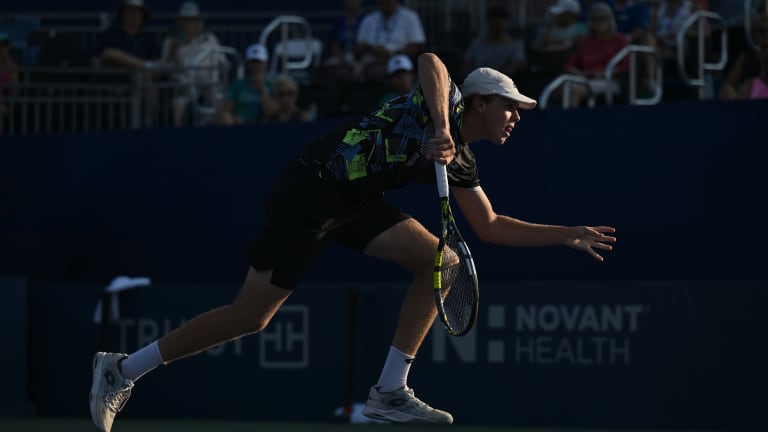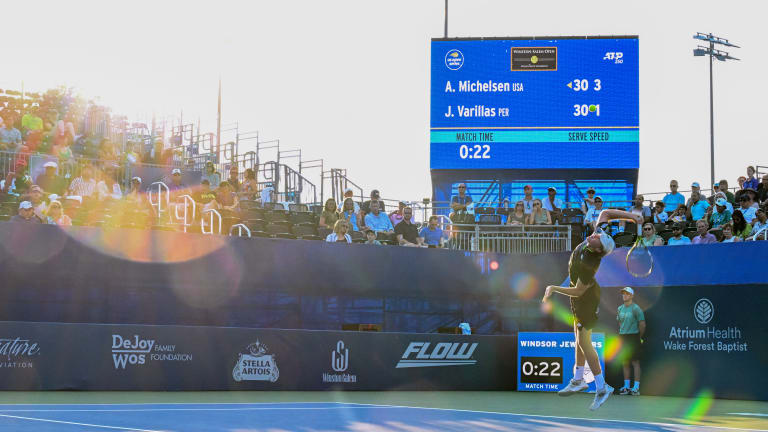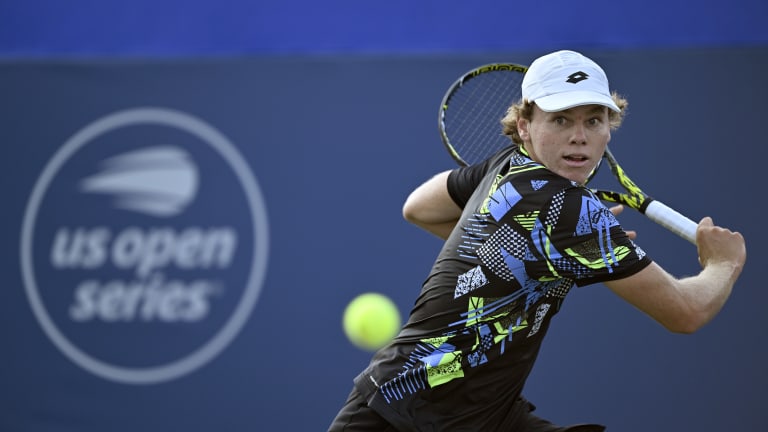Tennis.com Interview
Boy Meets World: Alex Michelsen's ascent from No. 1,022 to No. 110, in one year
By Sep 28, 2023Tennis.com Interview
Jan-Lennard Struff sees Munich title defense bid as 'perfect opportunity' to turn 2025 around
By Apr 14, 2025Tennis.com Interview
Lorenzo Musetti manifested his 'special' week in Monte Carlo with first Masters 1000 final
By Apr 12, 2025Tennis.com Interview
No logic, just a feeling: Andrey Rublev "always knew" he wanted to work with Marat Safin
By Apr 07, 2025Tennis.com Interview
Brad Gilbert, Patrick McEnroe weigh in on U.S. men's tennis evolution
By Apr 05, 2025Tennis.com Interview
Patrick McEnroe decries Jannik Sinner suspension, tags Joao Fonseca as future star
By Apr 04, 2025Tennis.com Interview
On chicken farm, Danielle Collins embraces “crunchy granola lifestyle”
By Apr 03, 2025Tennis.com Interview
Feeling like a teenager, Alizé Cornet, 35, makes triumphant comeback from retirement
By Apr 02, 2025Tennis.com Interview
Danielle Collins launches iconic richsport merch collab
By Mar 07, 2025Tennis.com Interview
Zizou Bergs: From TikTok to Top 50 in Indian Wells?
By Mar 06, 2025Tennis.com Interview
Boy Meets World: Alex Michelsen's ascent from No. 1,022 to No. 110, in one year
An unorthodox practice regimen and a "jumbled" game is all working out for this 19-year-old American.
Published Sep 28, 2023
Advertising

Alex Michelsen charges the net in Winston-Salem.
© Getty Images
Advertising

Michelsen gets airborne with his serve.
© Getty Images
Advertising
Advertising
Advertising
Advertising

“It’s all a bit jumbled,” says coach Leavitt of Michelsen's game. The approach going forward? “Make it better jumbled.”
© Getty Images